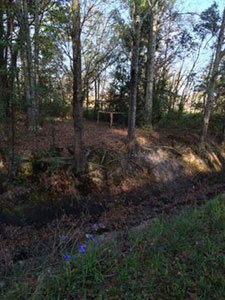Background
In December 2015, ATSDR accepted a petition to evaluate whether people are being exposed to hazardous materials at levels of health concern from the CSX Rail Yard and the former Atlanta Gas Light Manufactured Gas Plant(MGP) in the community of Waycross, Georgia. These evaluations will be conducted by the Georgia Department of Public Health (DPH) under ATSDR guidance and oversight, under the ATSDR’s Cooperative Agreement Program. ATSDR funds 25 Cooperative Agreement Programs including the state of Georgia. ATSDR, gives partners the resources to build their capacity to assess and respond to site-specific issues involving human exposure to hazardous substances in the environment. ATSDR will provide DPH with subject matter expert support and will review, clear, and certify the reports before they are released for public comment and finalized.
Historical Site Information
The CSX Rail Yard facility has operated since 1897 under several corporate ownerships. It services large rail/train equipment, generating large quantities of a variety of solid waste such as halogenated and non-halogenated spent solvents, waste paint, spent paint strippers, and caustics through degreasing, painting, and parts cleaning operations. Sludge from the treatment of process wastewaters contained solvents and hazardous constituents. The CSX Corporation is currently conducting remedial investigations and clean-up at the facility. The Georgia Department of Public Health (DPH) completed evaluating the potential health impacts of exposures to volatile organic compounds (VOCs) and metals in surface water, sediment, and soil near the facility. ATSDR released to the final report on 2/28/2019Cdc-pdf.

Canal and monitoring well next to CSX Rail Yard
The Former Atlanta Gas Light MGP Plant manufactured gas made from coal and other fuels used primarily for lighting in the Waycross community from 1916 to 1953. In 1994, the site was listed on the Georgia Hazardous Site Inventory. Groundwater, soil, and sediment coal tar contamination was found on and off-site. 94,000 tons of contaminated soil and sediment were excavated from a two-mile stretch of the Waycross drainage canal, and 30,000 tons of contaminated soil were excavated from the plant. Soil and sediment cleanup was completed in 2001. Groundwater remediation continues under the supervision of the Georgia Environmental Protection Division. The Georgia Department of Public Health (DPH) completed evaluating the potential health impacts of exposures to polyaromatic hydrocarbons (PAHs), semi-volatile organic compounds (SVOCs), VOCs, and metals in surface water, groundwater, sediment, and soil. ATSDR is reviewing the report before release for public comment.